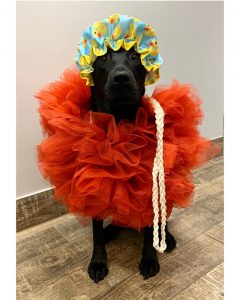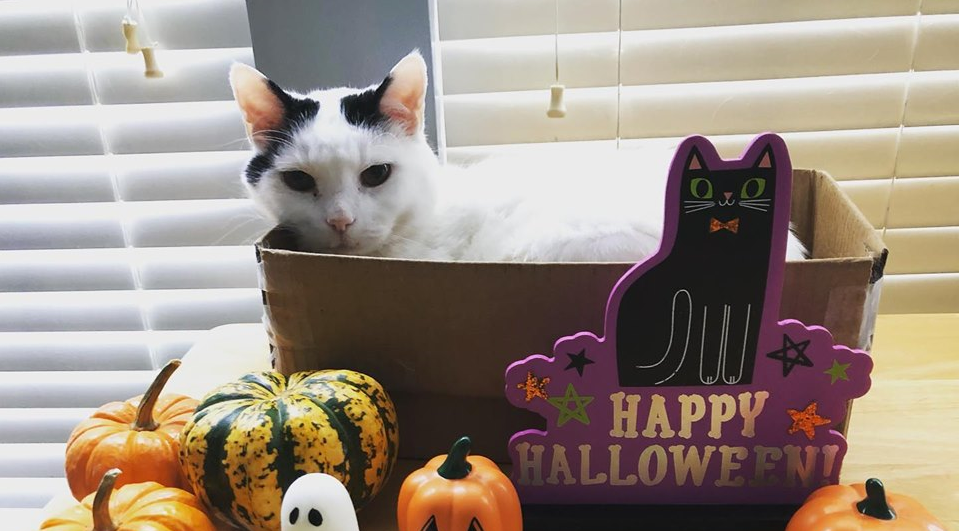With Halloween night almost here, the time is coming for candy, costumes, decorations, and overall spooky Halloween fun! October can be a month long celebration of all things scary, with lots of opportunities for candy and fun. While Halloween may be an exciting time for you and your children, did you know that this time of year may offer unique challenges for your pet?

Candy
Halloween candy, while delicious for people, can pose severe health risks for your pet if ingested. Chocolate contains multiple chemicals that can make your pet very sick if eaten. Chocolate toxicity in pets can lead to tummy trouble, such as vomiting or diarrhea, and even at high doses can lead to seizures and death. Some other types of candy may contain xylitol, which is a popular sugar free sweetener. If your dog eats xylitol, severe low blood sugar, liver damage and toxicity can occur, which can lead to severe health problems or even death. With these risks, it is important to make sure you and your children’s candy is stored in a safe place, far away from your pet’s reach. Sweet treats in general if ingested can increase risk of vomiting, diarrhea, and general stomach upset. If candy wrappers are involved, sometimes this can increase risk of an intestinal blockage, which may require surgical intervention.
If your pet is acting sick or accidentally ingests candy this Halloween season, please contact your veterinarian to help assess the situation and figure out the next best steps for you and your pet.
Decorations
Halloween decorations and costumes can be unfamiliar to your pet and may cause fear, stress or anxiety. If your pet is agitated by new people or by the door bell, it may be a good opportunity to discuss with your veterinarian plans of action to ensure your pet is happy and comfortable during trick or treating. Be sure any Halloween decorations are kept out of reach of your pet to avoid ingestion or destruction by a confused or disoriented pet.
If your pet is kept outdoors, consider bringing them in for Halloween night. With unfamiliar people and lots of activity, your pet may be more prone to escaping or taking part in unwanted shenanigans. If you are unable to bring your pet indoors, ensuring they are microchipped can be helpful in case they are ever lost. If you would like to check your pet for a microchip or have them chipped, please contact your veterinarian for more information.
Costumes
If you are planning on dressing up your pet for Halloween, get them used to wearing their costume prior to the actual day. Introducing your pet to their costume for short periods of time prior to the big day and reinforcing good behavior with positive experiences such as treats or toy rewards can help your pet understand and feel more comfortable in their costume.

Additionally, if you are planning on wearing a Halloween costume, allowing your pet a chance to see you and offering positive rewards can help them become more comfortable with the situation. Occasionally, the unfamiliar sights and smells of their owner in a costume can confuse your pet, so ensuring they are able to explore and understand is key.
Halloween can be a very exciting time for both pet owners and their pets. We hope these tips can help you and your pet have a safe and happy Halloween. Please do not hesitate to contact us with any questions or concerns. Our phone number is 704-847-8466 and our email is wah@wahcares.com.

